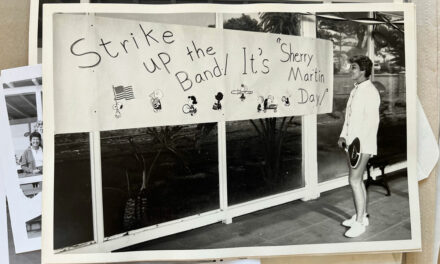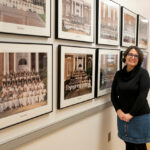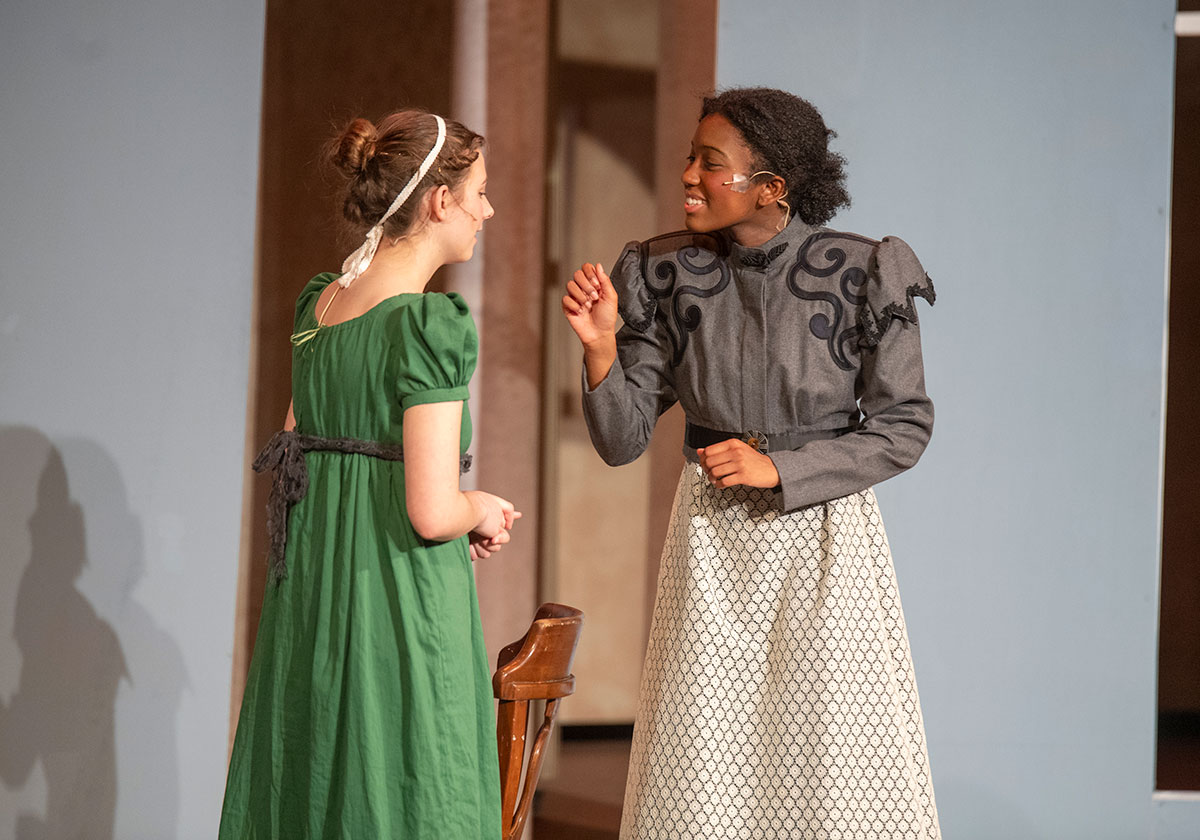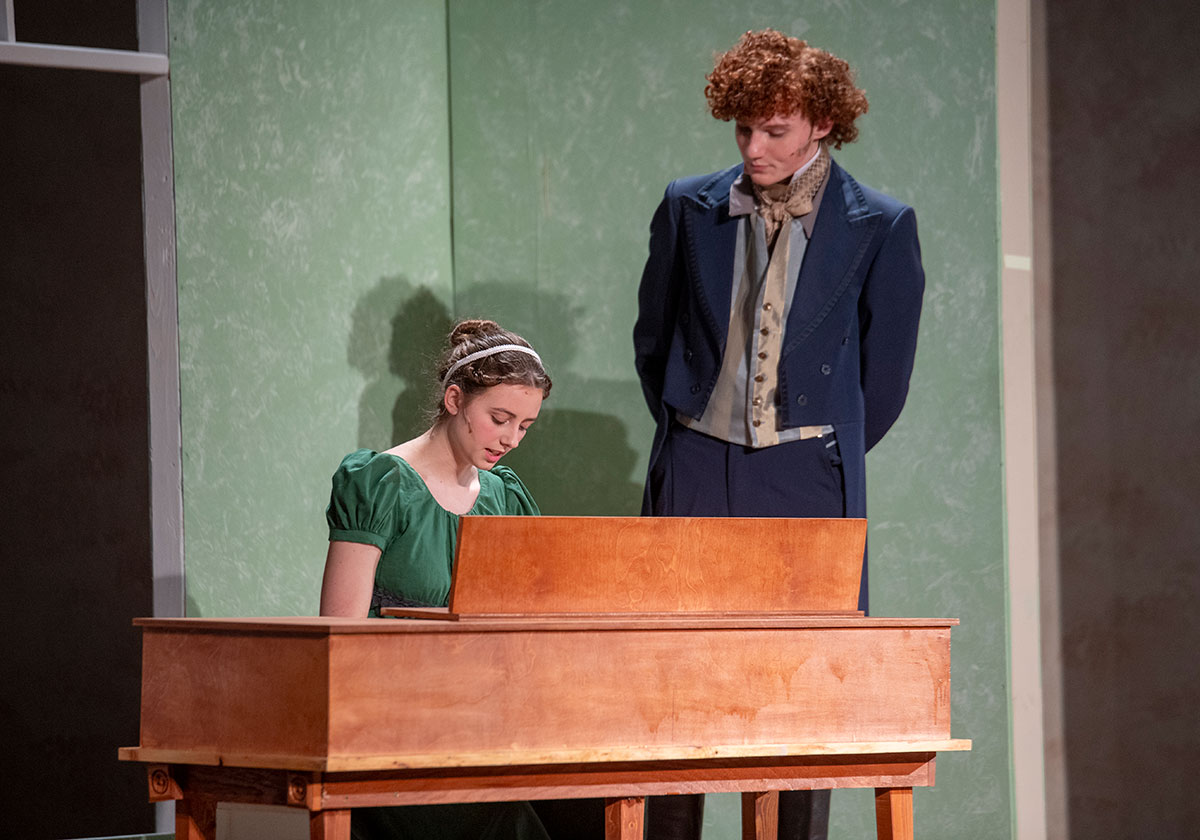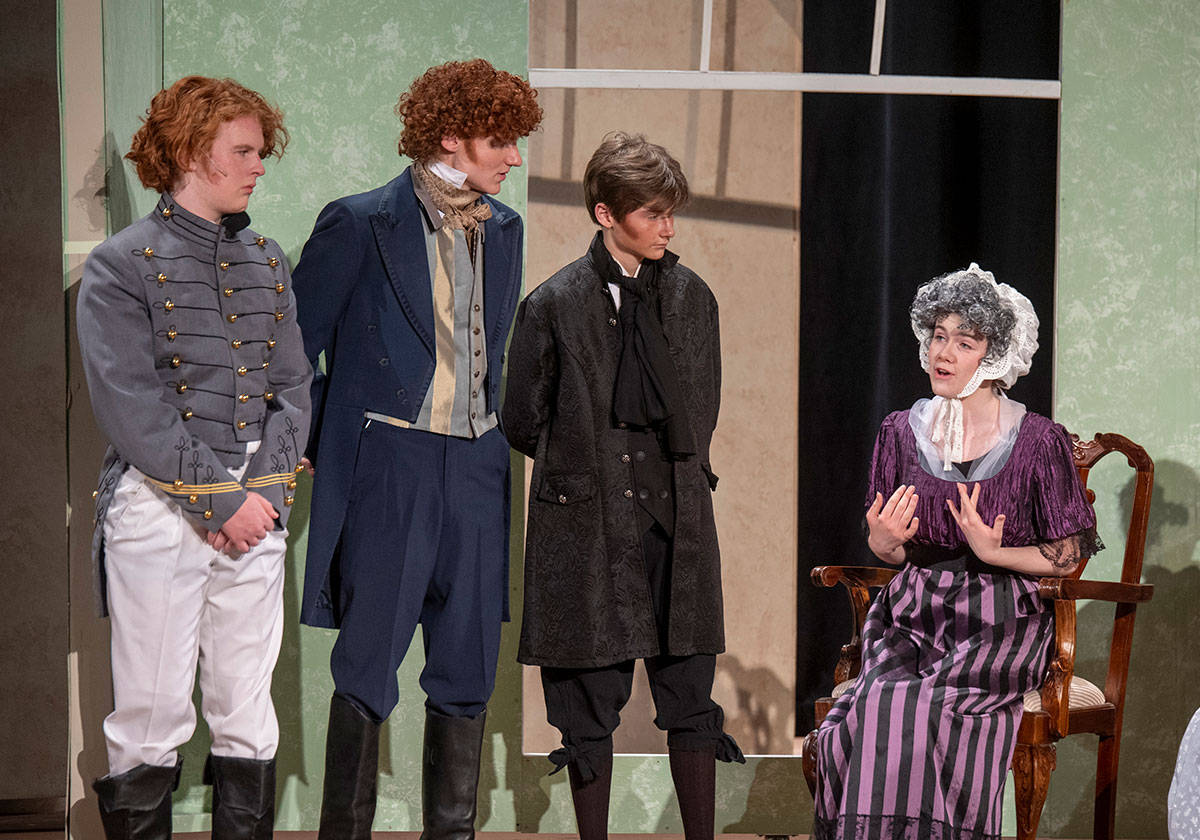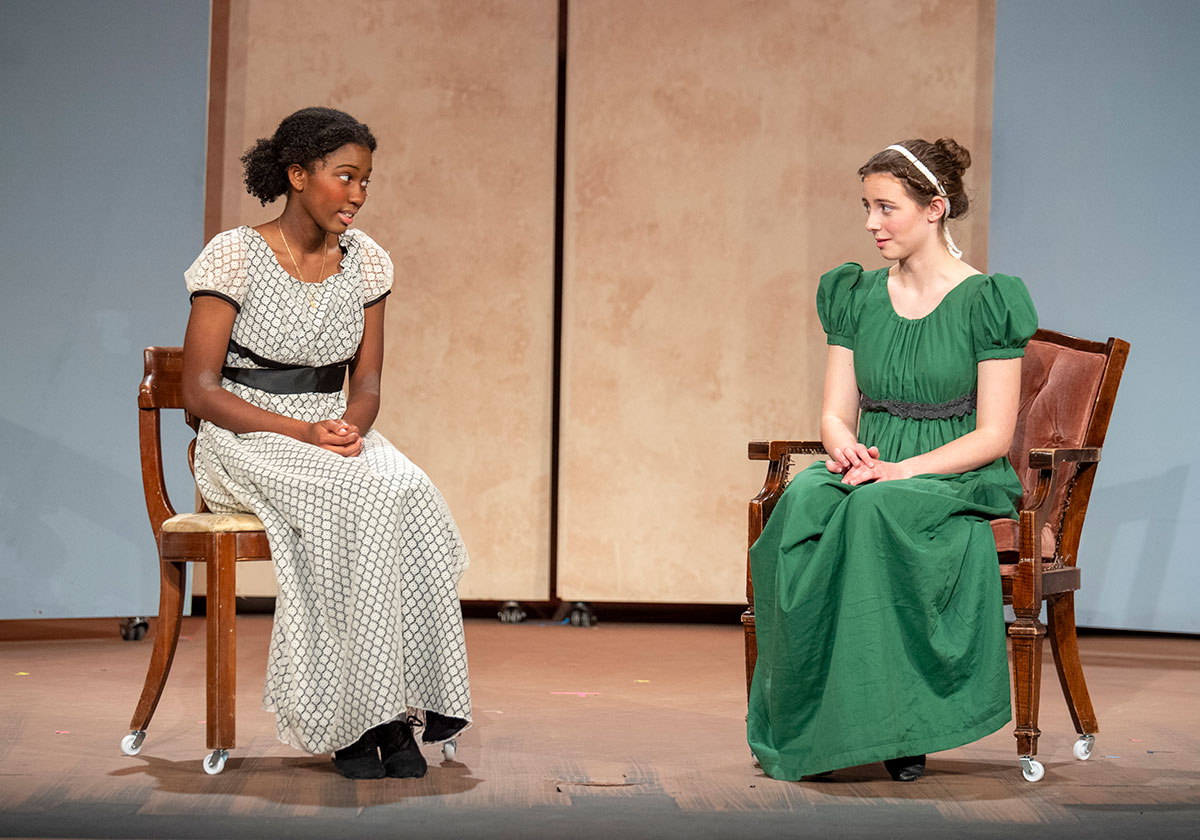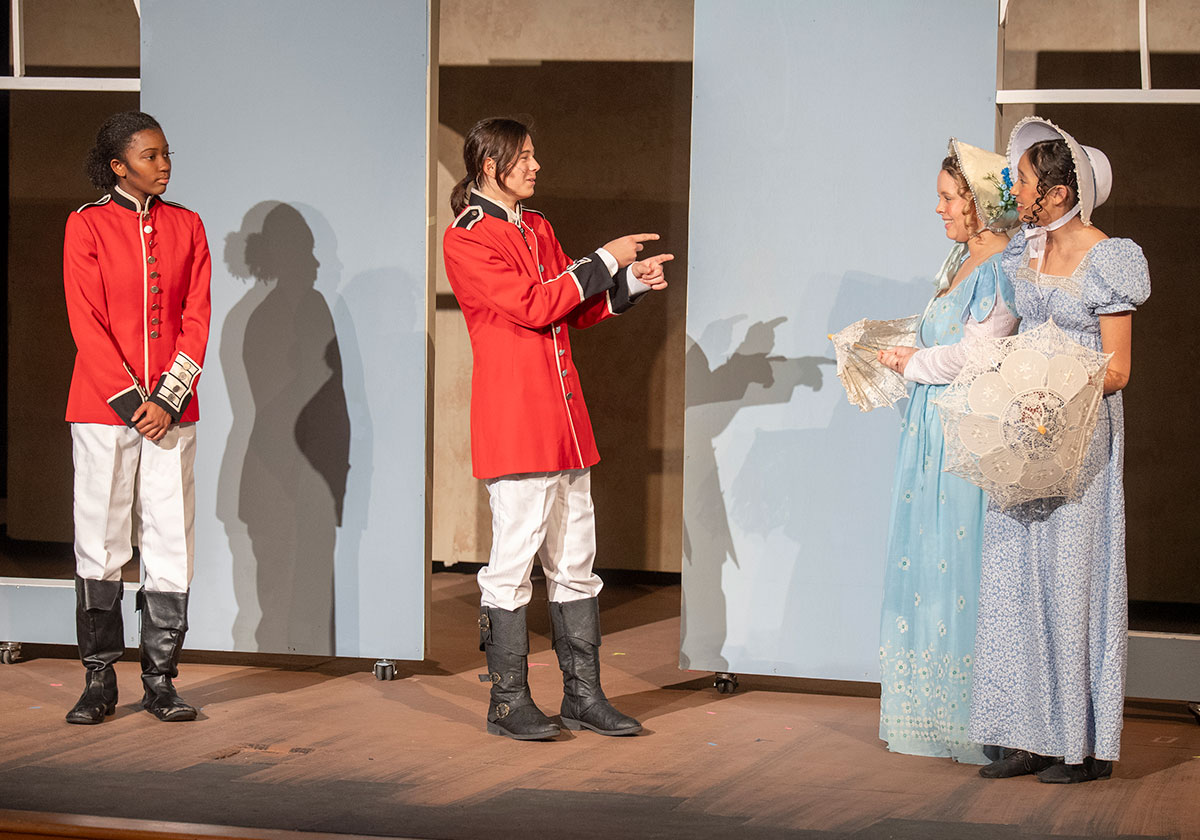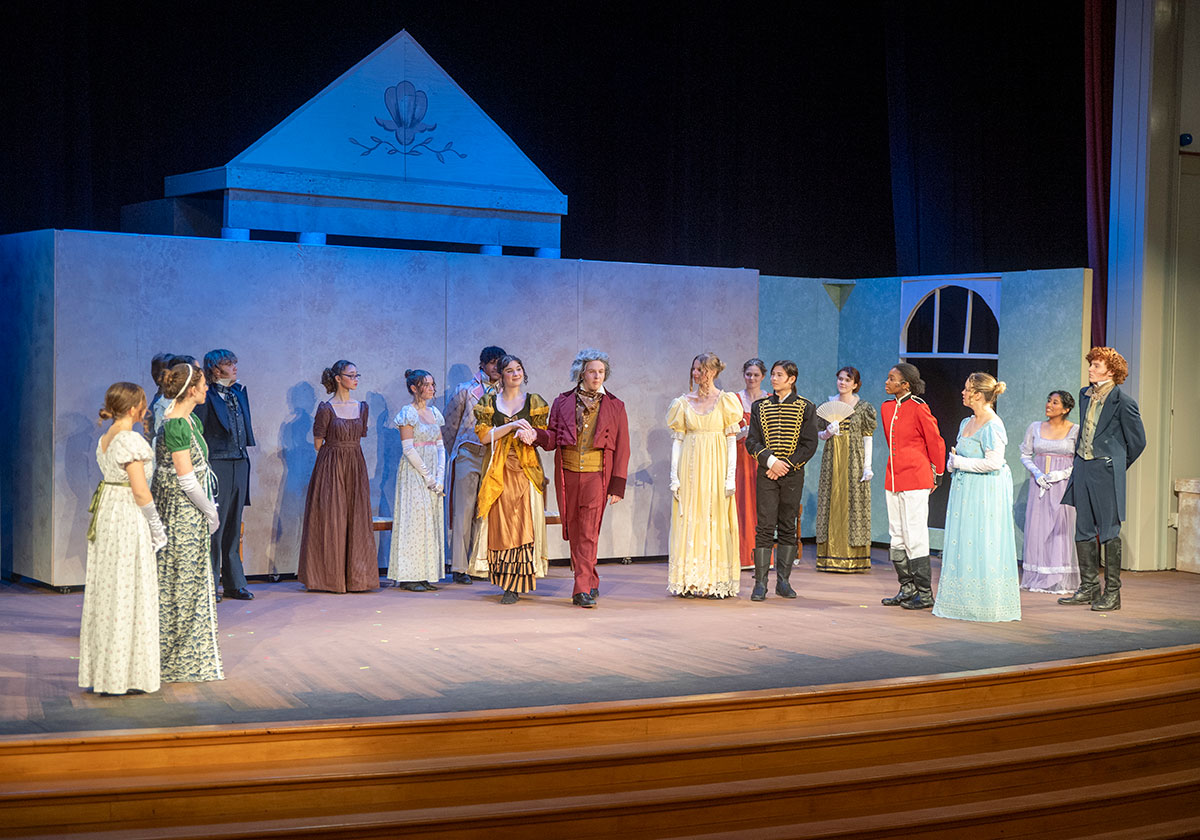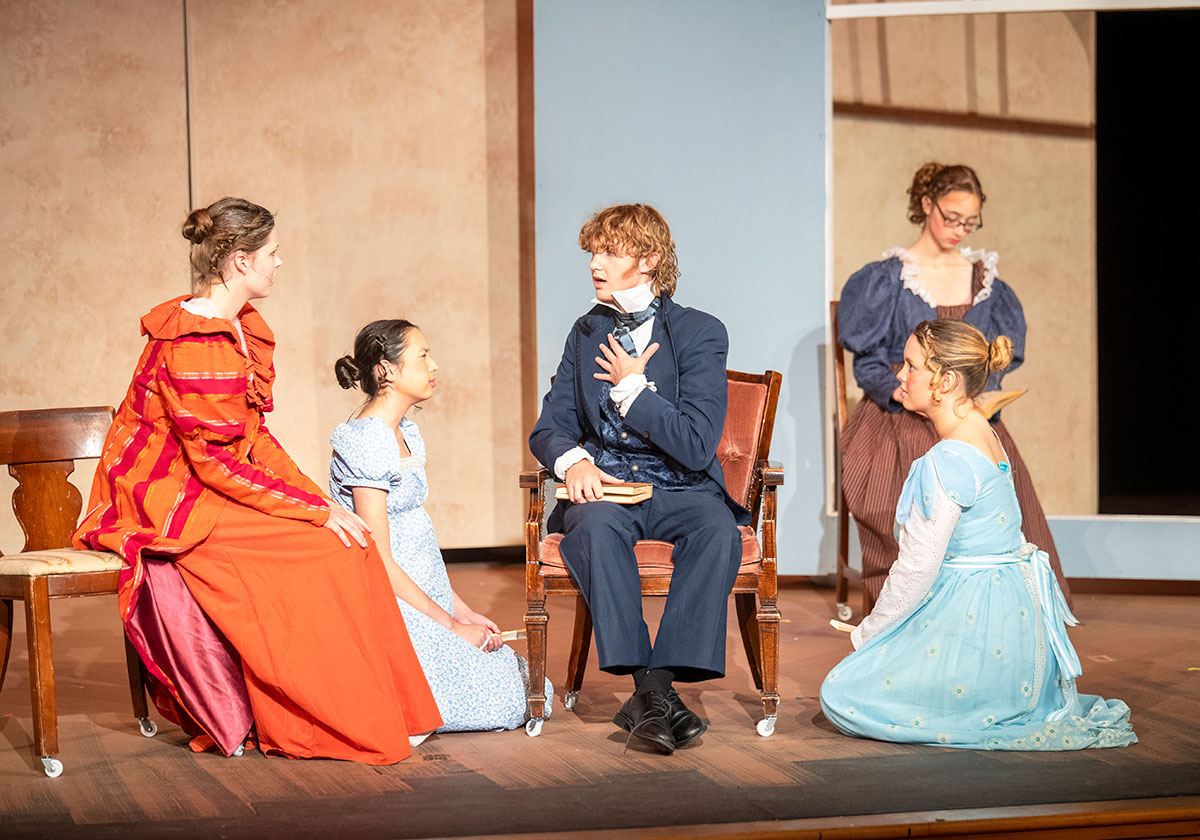
The Fabric of Imagination
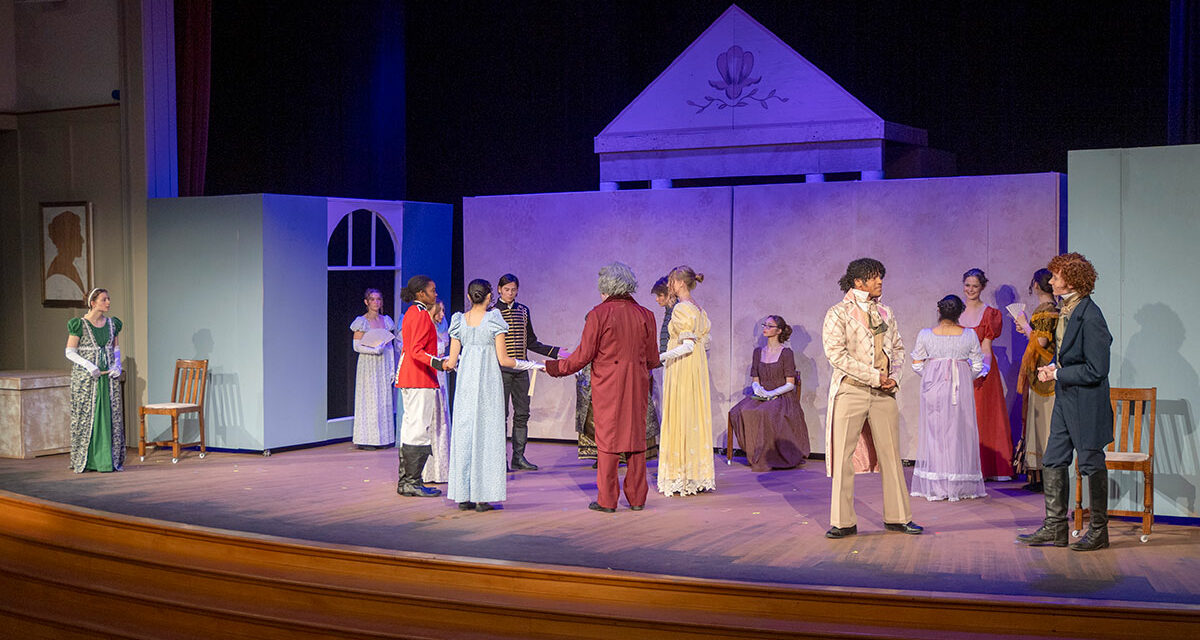
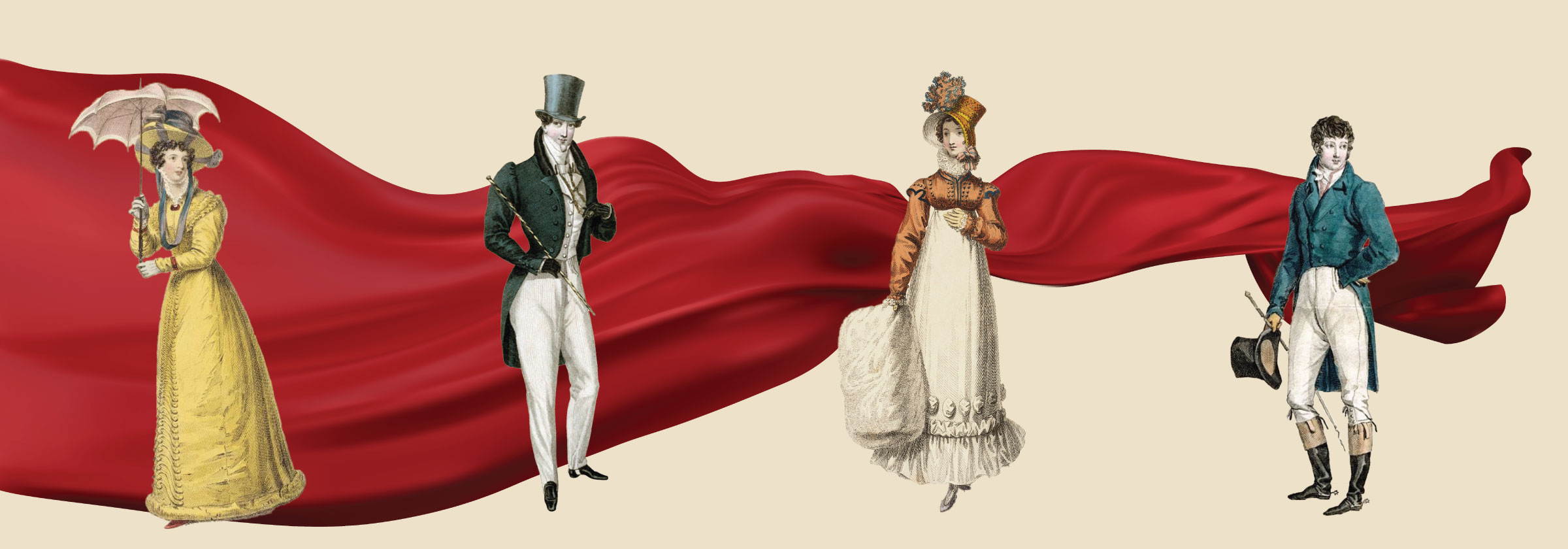
The Fabric of Imagination
Bringing “Pride and Prejudice” to Life
By Melissa Ulsaker Maas ’76
In the deep recesses behind the Black Box Theater stage, an incredible collection of costumes and props exists in a dimly lit space the students fondly call Narnia. For Elona Michael ’24, Indira Brown ’25, and Cate Nickson ’25, it is an extraordinary place where they weave through fabrics, and their imaginations dance amidst the swirls of color, textures, and styles. It’s a place they can travel through time, both to the past and to the future. In a realm where each stitch tells a story and every detail brings characters to life, this passionate trio have worked together for three years—on “Cinderella,” “Love and Information,” and “Mamma Mia!”—turning the mundane into the magical and proving that behind every mesmerizing performance there’s a team of artistic visionaries who bring dreams to reality.
Hitting the Ground Running
In September—just two weeks into the new school year—Elona, Indira, and Cate jumped headlong into the whirlwind of creating the costumes for the fall Stage One production, “Pride and Prejudice.” “We had 30+ costumes to create,” Indira says. “That might seem like a large number considering our smaller cast, but we had a few very talented actors who were playing multiple roles, plus the fact that we were costuming the run crew.” And the fact that “Pride and Prejudice” takes place during the Regency era was fun, but also challenging. “Unlike the costumes for the plays and musicals we worked on previously, we don’t have a lot of Regency costume pieces in stock,” Elona notes. “But we had a great deal of support from our director, Ms. Valerie Carlson.
Meeting every day after school from 3:30 to 5:30, the costume virtuosos began their design process by creating an inspiration board on Pinterest. “From there we went deeper into researching the Regency era, gathering details about how social class and where a character lived would impact their wardrobe,” Cate says. “Because this production is in a specific time period, our research informed our inspiration as we made sure we were choosing period accurate fashion.”
A New Perspective
This year they added something new to their process—interviewing the actors. “If the director allows them more flexibility within their character choices, they let us know whether that’s in terms of gender or certain personality traits,” Indira says. “We take that information and implement it into their costume, which is a really cool factor.”
This approach helps them to really focus on the cast. “Some of the characters didn’t have a fully flushed out backstory, so they created it themselves to enhance their performance,” Cate explains. “It was exciting to be part of that and reflect the character they developed in their costumes. Theater is a team sport. By including the ensemble in our conversations, we were able to give them more nuanced characters.”
The Regency Era
To vividly portray each character in accordance with the historical period, the costume designers meticulously considered the influence of social status, color choices, fabric selections, and accessories on the characters they were outfitting. Elona underscores the significance of accuracy in costume design, emphasizing its pivotal role in storytelling, “The Bennett’s are an upper middle-class family versus Mr. Darcy who is clearly upper class. Little things like neck wear and the cluster of the white cloth are important. Mr. Bennett would be way more relaxed and he would have less layering, while Darcy would probably have more layering on his neck piece.” Indira emphasizes the role of color as a reflection of social class in “Pride and Prejudice,” noting that it holds significant importance for both men and women, “If a man wanted to look well put together and like they had money, they chose duller, darker colors.”
Fabric and colors served as key indicators of a woman’s position in life. The French Revolution and Napoleonic Wars had just occurred and led to a shift in fashion. There was a revival of interest in classical art and literature, particularly the ancient Greek and Roman civilizations, which heavily influenced Regency fashion as women looked for clothing that was comfortable and practical. “Women of higher status would wear brighter, silkier clothing,” Cate says. “Some of it is about extravagance, although it’s a balance in this period as they veered away from Marie Antoinette’s elaborate gowns towards a more simplistic elegance. The empire waist was very popular.”
There’s More to Color than Meets the Eye
The design team cleverly used color, not only as a palette for the production, but also as another way to enhance the storytelling. They utilized color to reflect a mood in a scene or a character’s personality. “Flashy extravagant characters were dressed in brighter colors, while more toned down, cool characters wore lighter colors and pastels,” Cate says. “The colors also differed with age.” And, they used color to indicate contrasting characters and characters falling in love. “We thought in terms of a general color scheme, but within that we used color to reflect what was happening between characters,” Indira explains. “For instance, if two characters were in a developing relationship, we made sure that the colors they wore became more alike as the relationship grew. The relationship between Elizabeth Bennet and Mr. Darcy was contentious at the beginning, so we dressed them in very different colors. As the play progressed, their color palettes began to blend and by the end they matched. We did that with Jane Bennet and Mr. Bingley, too.”
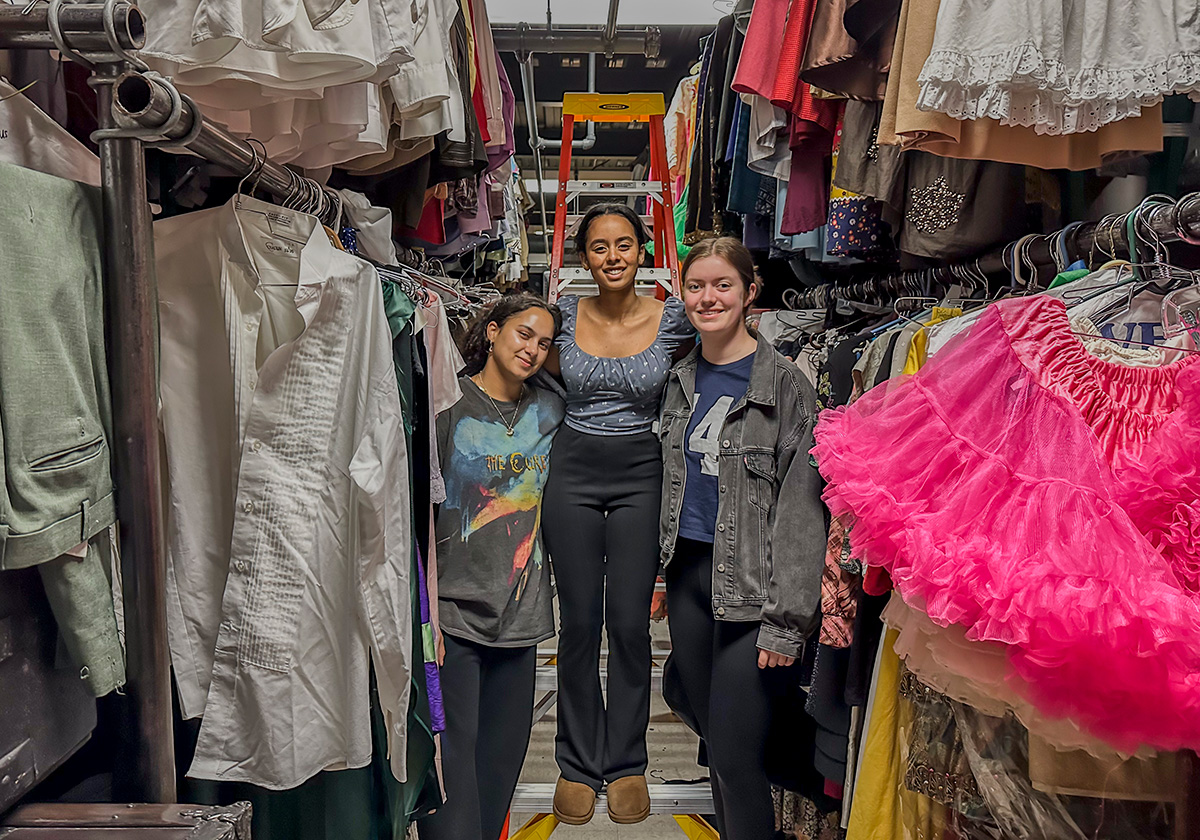
Indira Brown ’25, Elona Michaels ’25, and Cate Nickson ’25 in Narnia.
Coming Up Empty in Narnia?
Normally, the costume designers search through the huge supply of costumes in Narnia, pulling together different bits and pieces to create new looks for the characters in each production, but the intricacies of Regency clothing were very challenging and not readily available. Anything they can’t find in Narnia has to be ordered, rented, or made, and renting can be problematic. “Because we usually receive the rented costumes during the last month before we open, which means all the changes have to be made at the last minute,” Cate says. “The final two weeks leading up to the play were very hectic, as we still have about 30% of our work to do.”
Top Hats and Ribbons Galore
For this production, accessories played a prominent role. “We thought a lot about accessories, because we used them to contrast regular day wear versus ball wear,” Elona says. “For example, we used a jacket or nice hat to accent day wear, but replaced them with gloves for the ball. We do have a good stock of top hats in Narnia, which is very helpful in terms of the male characters.” The girls burst into laughter and Indira says, “And lots of ribbons!” Amidst more laughter Cate adds, “Thankfully we have a good stock of ribbons. Bonnets are very expensive, so we are buying a couple of base bonnets and then we’re going to embellish them ourselves with ribbons and flowers.”
Finicky Fabrics
Choosing fabrics requires special care for a number of reasons. Elona, Indira, and Cate always look for quality fabrics and are wary of choosing something that will look “too costumey.” “To maintain historical accuracy, we searched for natural fibers and avoided polyester,” Indira says. Cate observes, “Some of the polyesters look really bad under the lights, because they’re too shiny.” Colors are also affected by the lighting on stage. The costume designers consult with the lighting team to find out what lights will be used when, to make sure the costume colors they choose are complimentary.
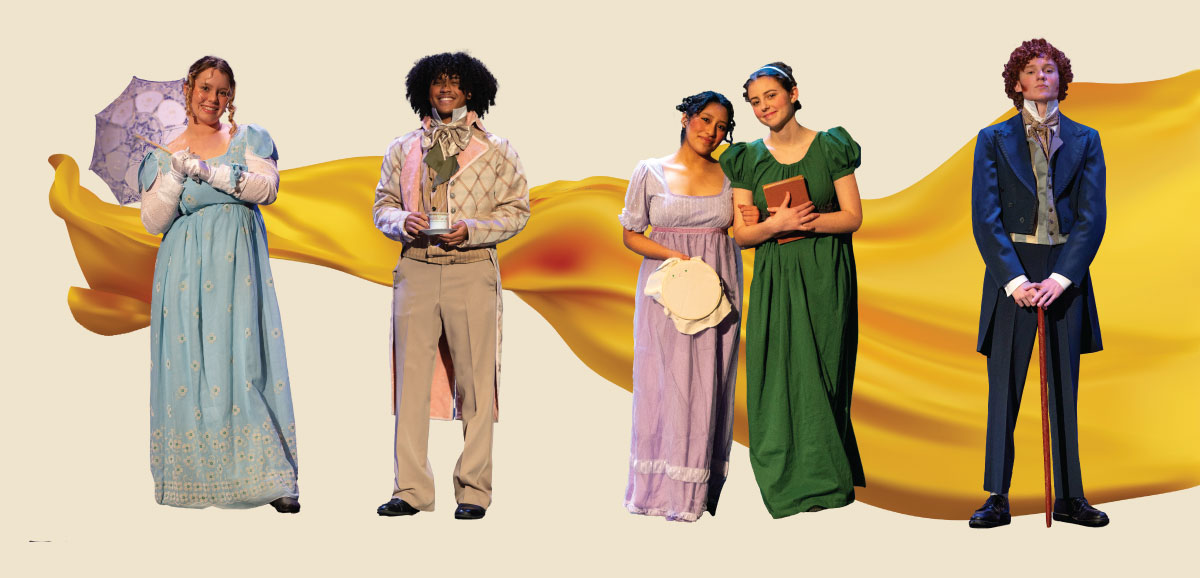
Painting the Same Picture
In October the director pulled everyone together—set, lighting, costumes, hair and makeup—to discuss the overall plans. “We presented a slideshow of our fashion plans so everyone was on the same page,” Indira says. “We’re all painting the same picture, so we need to know what direction everyone is going in and work out a master plan.”
And, of course, that master plan has to reflect the overall vision of the director, who is incredibly supportive but doesn’t always agree with her proteges. “There’s always a few costumes in every show that our director isn’t crazy about, whether for character reasons, historical accuracy, or the overall aesthetic of the show,” Cate says. “In those instances, we have to find a new outfit for the character. For this show, we had a dress picked out for Mrs. Phillips which our director thought was odd, so we found another dress we all could agree on. It can be frustrating when we love a costume that our director doesn’t, but compromise is a very important part of our job, and that’s how the show comes together as a cohesive whole.”
And the Final Act…
Ultimately, Elona, Indira, and Cate have a common goal. “We want all the actors to feel self-confident, comfortable and gorgeous, handsome and pretty in their costumes,” Cate says. Because when they feel 100% in character, it’s reflected in their performances, and great performances are what the whole production team is working towards—using the fabric of their imaginations to take a play from paper to reality. Bravo!
ON THE STAGE: “PRIDE AND PREJUDICE”
In November Stage One presented three performances of Jane Austen’s sparkling satire of family dynamics, romantic entanglements, social-climbing scoundrels, and the social scene of the Regency period.

